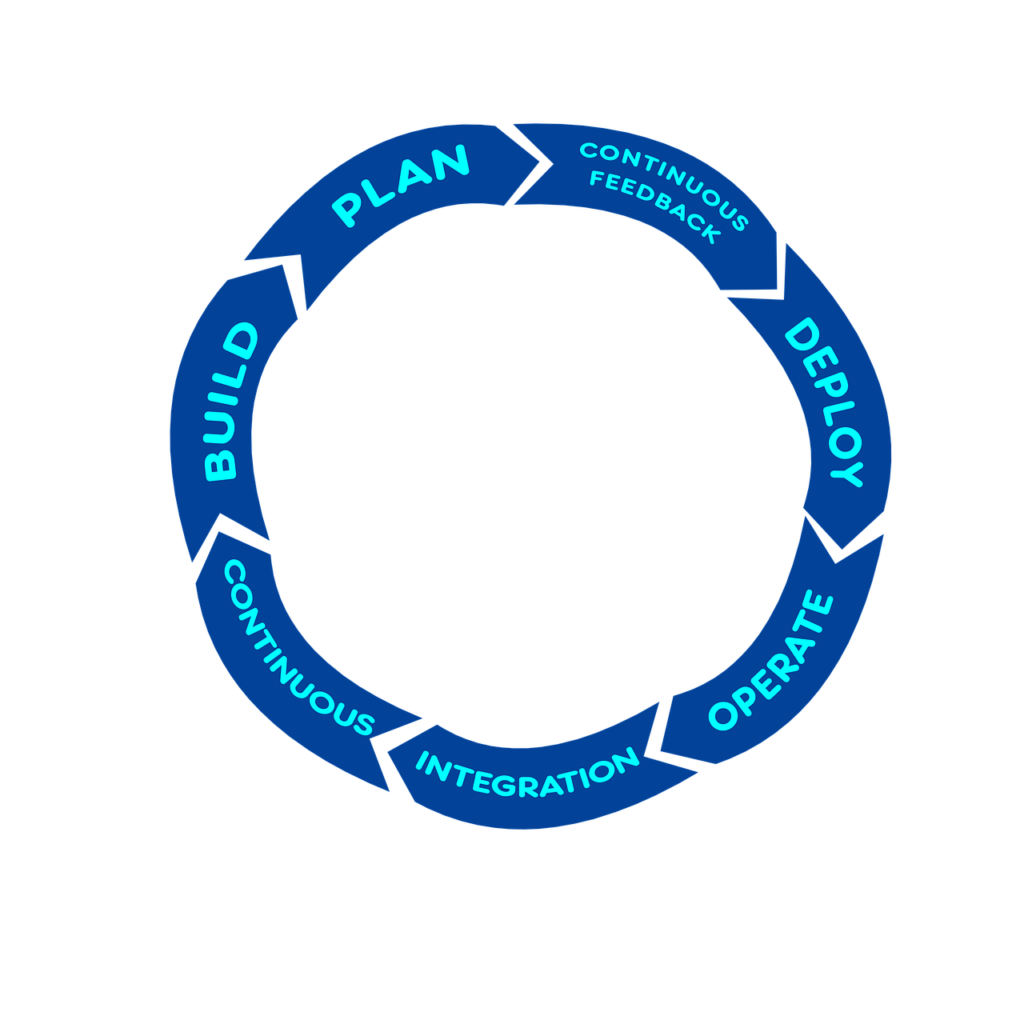Are you tired of spending hours manually collecting and analyzing customer feedback? Well, the good news is that there is a way to make this time-consuming task much easier. In this article, we will explore whether it is possible to automate the process of collecting customer feedback. We will discuss the benefits of automation, the tools available, and how it can help you gather valuable insights more efficiently. So, if you’re ready to streamline your feedback collection process and gain valuable customer insights effortlessly, keep reading!

Importance of Customer Feedback
Collecting customer feedback is crucial for any business that wants to thrive in today’s competitive market. Understanding the needs and expectations of your customers is essential for providing a product or service that meets their requirements. By actively seeking and listening to customer feedback, you can gather valuable insights that allow you to align your offerings with their preferences and expectations.
In addition to understanding customer needs, feedback also helps to identify areas for improvement. By listening to customer complaints or suggestions, you can identify pain points in your current processes and make necessary adjustments. This can lead to improved product offerings, customer service, and overall customer experience.
Furthermore, collecting customer feedback is key to building customer loyalty and satisfaction. When customers feel heard and valued, they are more likely to develop a sense of loyalty towards your brand. By implementing their suggestions and addressing their concerns, you can demonstrate your commitment to their satisfaction, which can contribute to long-term customer loyalty.
Traditional Methods of Collecting Customer Feedback
Historically, businesses have relied on various methods for collecting customer feedback. Surveys have been a popular choice, allowing businesses to gather a wide range of information directly from customers. Focus groups, where a small group of customers are brought together for a discussion, provide more in-depth insights. Suggestion boxes have also been used as a way for customers to provide feedback anonymously. Lastly, the analysis of customer support interactions, such as calls or chats, can offer valuable feedback on customer experiences.

Challenges of Traditional Methods
While traditional methods have been effective to some extent, they come with their own set of challenges. These methods can be time-consuming and resource-intensive, requiring significant effort to design, distribute, and analyze the collected data. Additionally, the sample size and representation of traditional methods can be limited, potentially excluding certain segments of the customer base. This can lead to skewed results and a lack of comprehensive insights.
Furthermore, traditional methods are subject to bias and influence. Participants in focus groups may be influenced by each other’s responses, and not all customers may feel comfortable sharing their honest opinions. Data analysis and interpretation can also be challenging, especially when dealing with large quantities of feedback that require manual processing.
Advantages of Automating Customer Feedback Collection
With advancements in technology, automated customer feedback collection has emerged as a valuable alternative to traditional methods. By automating the process, businesses can experience various benefits that positively impact their feedback collection efforts.
Automated methods allow for efficiency and time savings. Surveys can be created and distributed online, reaching a larger audience and reducing the need for manual data entry. This efficiency also enables businesses to collect feedback on a more regular basis, providing a continuous stream of insights.
Additionally, automation increases scalability and reach. Online survey platforms, email survey tools, mobile app surveys, and website feedback widgets can be accessed by customers regardless of their geographical location, allowing for a wider pool of respondents.
Automation also promotes consistency and standardization in feedback collection. By using predefined questionnaires and response options, businesses can ensure that all participants are presented with the same questions, reducing the possibility of data discrepancies. This standardization enables more effective data analysis and comparison.
Furthermore, automating feedback collection can help reduce bias and improve data quality. Anonymous online surveys and feedback widgets give customers the freedom to express their opinions without fear of judgement. This can result in more honest and accurate feedback, providing businesses with reliable insights.

Automated Survey Tools
Automated survey tools have revolutionized the way businesses collect customer feedback. These tools provide a user-friendly interface for designing surveys, distributing them to a wide audience, and analyzing the collected data.
Online survey platforms offer businesses the ability to create customized surveys with various question types, including multiple-choice, rating scales, and open-ended questions. These platforms provide options for distributing surveys via email, social media, and embedding them on websites. The collected data is then automatically compiled and presented in a format that is easy to analyze.
Email survey tools allow businesses to send targeted surveys directly to their customers’ inboxes. This method is particularly effective for collecting feedback from existing customers or after a specific interaction, such as a purchase or customer support interaction. Email surveys can be personalized and automated, making it easier to gather valuable feedback at the right time.
Mobile app surveys take advantage of the widespread use of smartphones. By integrating surveys within mobile applications, businesses can collect feedback from customers who are on the go. This provides real-time insights and allows for a seamless feedback collection process.
Website feedback widgets offer a passive way for customers to provide feedback while browsing a website. These widgets typically appear as a small pop-up or tab, prompting customers to share their thoughts or report any issues they encounter. This method is non-intrusive and can gather feedback from a broad range of website visitors.
Integration with Customer Relationship Management (CRM) Systems
Integrating automated customer feedback collection with Customer Relationship Management (CRM) systems can further enhance the effectiveness of feedback management and analysis. By leveraging CRM systems, businesses can streamline the feedback collection process and gain a deeper understanding of their customers.
Automated customer feedback collection through CRM systems enables businesses to directly capture feedback within the customer record. This allows for a comprehensive view of each customer’s feedback history, enabling personalized interactions and targeted follow-up.
Enhanced data tracking and analysis is another advantage of integrating feedback collection with CRM. By linking customer feedback to specific interactions, businesses can identify trends or issues that may require attention. This data can also be used to track customer satisfaction over time, providing insights into the effectiveness of any improvements or changes implemented.
Streamlined feedback management and follow-up is facilitated by integrating feedback collection with CRM systems. Feedback can be automatically assigned to the relevant teams or personnel, ensuring timely actions and responses. This integration also allows for the creation of automated workflows or triggers, ensuring that feedback is not lost or overlooked.
User Experience (UX) Testing Automation
User experience (UX) testing is a critical aspect of ensuring that a product or service meets customer expectations. Automating the feedback collection process during UX testing can provide valuable insights and drive improvements.
Automated feedback collection allows for real-time monitoring and integration of feedback during the testing phase. This enables businesses to make immediate adjustments based on user feedback, ensuring that any issues or pain points are addressed promptly.
Usability testing automation tools offer a range of features that facilitate feedback collection. These tools often include screen recording capabilities, allowing businesses to visually analyze how users interact with their product or service. Additionally, automated surveys or questionnaires can be embedded within the testing process, capturing user feedback at specific points.
Behavioral analysis and user journey mapping are enhanced through the automation of UX testing. By tracking user actions and interactions, businesses can gain a deeper understanding of how customers navigate their product or service. This analysis can uncover areas where improvements can be made, leading to an enhanced user experience.
Social Media Listening and Sentiment Analysis
The rise of social media platforms has made it essential for businesses to monitor customer sentiment and engage in conversations happening online. Automated social media listening and sentiment analysis tools enable businesses to effectively collect and analyze feedback shared on these platforms.
Automated monitoring of social media channels allows businesses to stay informed about what customers are saying about their brand, products, or services. By tracking relevant keywords, hashtags, and mentions, businesses can identify trends, sentiment, and emerging issues. This real-time feedback provides valuable insights that can inform decision-making and response strategies.
Capture and analysis of customer sentiment is another key advantage of social media listening and sentiment analysis. These tools use natural language processing algorithms to detect the sentiment behind customer posts or comments, whether it be positive, negative, or neutral. This allows businesses to gauge overall customer sentiment and identify areas where improvements are needed.
Identification of trending topics and issues is facilitated through automated social media listening. By monitoring conversations happening on social media, businesses can identify emerging trends, industry insights, and customer expectations. This information can inform future product development or marketing strategies, ensuring that businesses stay relevant and responsive to customer needs.
Integration with feedback management systems enables businesses to consolidate social media feedback with other feedback channels. This holistic view of customer feedback allows for a comprehensive analysis and actionable insights.
Artificial Intelligence (AI) and Natural Language Processing (NLP)
The advancements in artificial intelligence (AI) and natural language processing (NLP) have opened up new possibilities for automated analysis of customer feedback. These technologies can enhance the efficiency and accuracy of feedback analysis, providing businesses with invaluable insights.
Automated analysis of customer feedback through AI and NLP allows businesses to process large quantities of feedback quickly and accurately. These technologies can automatically categorize feedback, identify key themes, and detect sentiment. This streamlines the analysis process and provides businesses with actionable insights in a fraction of the time it would take using manual methods.
Sentiment analysis and emotion detection go beyond simply categorizing feedback as positive, negative, or neutral. AI and NLP can identify the underlying emotions expressed in customer feedback, providing a deeper understanding of customer experiences. This enables businesses to address specific emotional needs and create more personalized solutions.
Identification of key themes and trends is made easier through automated analysis. AI and NLP can identify recurring topics, issues, or preferences expressed in feedback, allowing businesses to prioritize their efforts. This proactive approach enables businesses to focus on addressing the most significant needs or pain points of their customers.
Additionally, AI and NLP can generate actionable insights from customer feedback. By analyzing large volumes of feedback data, these technologies can uncover patterns and correlations that may not be immediately apparent. This can provide businesses with valuable guidance on how to improve their products, services, or customer experiences.
Best Practices in Automated Customer Feedback Collection
While automating customer feedback collection can bring numerous benefits, it’s important to follow best practices to ensure optimal results. By following these guidelines, businesses can maximize the value and impact of their automated feedback collection efforts.
Designing targeted and relevant surveys is key to collecting meaningful feedback. Tailor surveys to specific customer segments or interactions, ensuring that the questions asked are relevant and provide actionable insights.
Consider the frequency and timing of feedback requests. While continuous feedback collection is valuable, bombarding customers with requests can lead to survey fatigue. Find a balance that allows for regular feedback while respecting the customer’s time and attention.
Personalization and customization of feedback collection can further enhance the effectiveness of automated methods. Where possible, collect demographic or transactional data to personalize the feedback process. This can create a more engaging and personalized experience for customers, increasing their willingness to provide feedback.
Combining automated and human interactions can provide a holistic approach to customer feedback collection. Automated methods can efficiently collect and process large quantities of feedback, while human interactions, such as follow-up calls or personalized emails, can provide a personal touch and gather in-depth insights.
In conclusion, automating the process of collecting customer feedback offers numerous advantages over traditional methods. By using automated survey tools, integrating with CRM systems, automating UX testing, employing social media listening and sentiment analysis, and leveraging AI and NLP, businesses can gather valuable insights to improve their products, services, and customer experiences. By following best practices, businesses can ensure that their automated feedback collection efforts result in actionable insights and stronger customer relationships.
